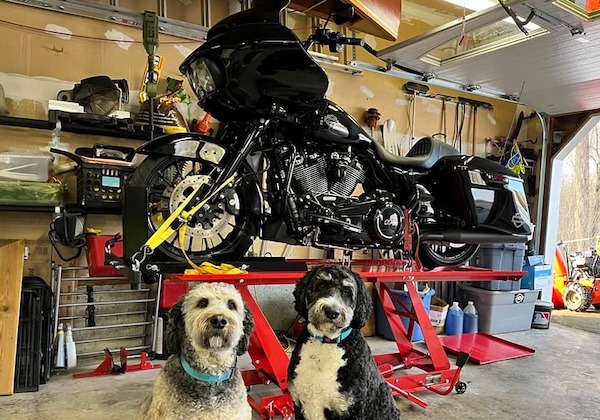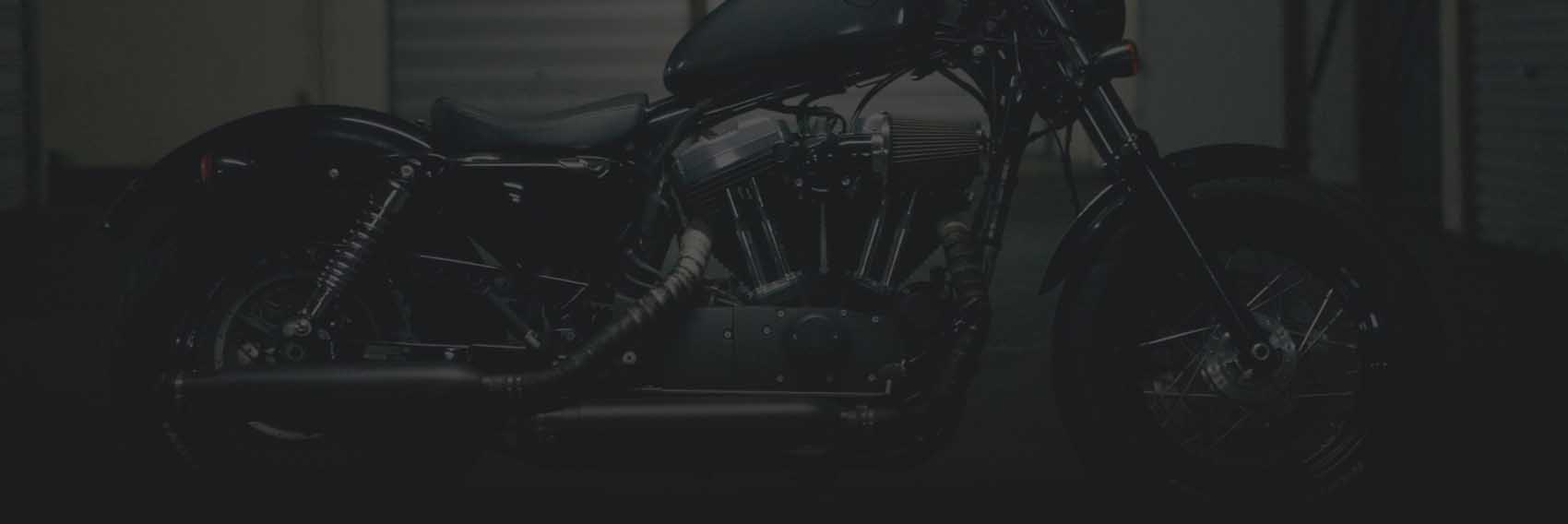
photo by Russ Sturgis from the WE RIDE! HOGWORKZ Facebook Group
Winterizing Your Harley-Davidson Motorcycle
As riding season comes to a close in the northern states, taking steps to prepare your Harley for hibernation is crucial. Phil, one of our service techs at HOGWORKZ has laid out the winterizing process he does every year. Follow these tips to ensure a smooth start-up in the spring.
Harley Fuel Treatment:
With today’s blended fuels, storage of gasoline is no longer an option for more than a few months. I like to start off my winterization process by tackling my gas tank. Whether it is by design or pure chemistry, there isn't much longevity when it comes to storing fuel. Will it store for a longer time? Sure, but you will lose some bang for your buck.
Storing your bike for the winter in northern climates with a partial tank of gas may cause your fuel tank to sweat inside- similar to your oil tank. This adds water to your fuel and will lead to rusting on the inside of an unsealed fuel tank. Nobody wants water in their fuel! Storing your bike topped off will eliminate this from happening and keep your gas tank clean all winter.
Many different types of storage additives are available at your local auto part store, from brands like Sea-Foam, Sta-bil, Amsoil and more. These additives provide extra storage life and act as cleaning agents for your fuel systems.
Fuel Injected (EFI) Bikes:
For all modern touring Harleys that are fuel-injected, the process is slightly different. After you fill the tank and add the stabilizer, you MUST start the motorcycle and let it run for 10 to 15 minutes. This is essential to draw the stabilized fuel through the fuel pump, lines, and injectors, protecting the entire system from varnish buildup.
Carbureted Bikes:
Carbureted bikes benefit a great deal from additives. This reduces corrosion inside the float bowl, as well as main jets, pilot jets, and enrichener passages. Carbureted bikes have a fuel petcock on the tank. Simply turning the petcock off and running the bike until it stalls before storage will remove excess fuel from your system. Burning up this extra fuel will prevent corrosion inside the carb.
Battery Maintenance:
Batteries are costly to replace, so it is important to maintain them throughout their life. Cold temperatures can harm lead acid battery life. For winter storage, it is best to keep your battery temperature above freezing. This may require removing the battery and storing it indoors depending on your location. Always ensure your battery is fully charged before storage, installation, or testing.
A Battery Tender is also a very good storage option that many riders use. Ensure your battery connections are in a good clean condition prior to storage and perform a battery load test which can be found in our General maintenance blog. Inspecting for sulfation (bulging in the side of the battery) is a good idea at this time as well, no sense in storing a bad battery.
Caution: Charging a lead acid battery can produce hydrogen sulfide gas! This gas is colorless, poisonous, flammable, and smells like rotten eggs. Always charge batteries in a well-ventilated area away from open flames.
Harley Oil Changes:
When and how often to change your bike’s oil can be an arguable debate, however, it is still a personal preference. I always change my oil at the beginning of spring, right before riding season here in Michigan. With temperatures fluctuating throughout the fall and winter, your bike can end up with what we call the “beer can effect”. Shifting temperatures can cause your motor to sweat due to weather changes. This moisture will eventually settle in the sumps, not a huge deal, but a little bit of water in your motor is still going to be water in your motor (which is never a good thing). It is always recommended to completely change it every 3,000-5,000 miles depending on the oil type you have.
Motorcycle Tire Pressure:
Checking your tire pressure before storage is critical to avoid flat spots. You will undoubtedly lose tire pressure over the winter, so it's important to prepare them before winterizing your ride. Check your tire pressures per the manufacturer's recommended pressure stamped into the sidewall of the tire, most tires require 40-42 psi.
Harley Tire Flat Spot Prevention Tip:
Storing your bike on the cold concrete and not moving for months at a time may cause flat spots. Simply rolling the bike around throughout the winter may help in preventing this.
Bagger Tire Tread:
Tread depth by DOT standards is no less than 4/32” on the steer and 2/32” on the Rear. If yours measure lower than that, best to replace those worn-out tires.
Cleaning Your Bike:
Before putting your bike down for the winter make sure to give it a deep clean. Dirt and grime retain moisture, and excess moisture can cause corrosion. A mild basic soap and water wash or degreaser is best for cleaning. Be sure to take extra care of your chrome or it will rust!
To get your bike extra clean, make sure to remove your seat and saddlebags. It can be surprising how much dirt can accumulate on the hidden spots of your bike.
Once you’ve finished your basic wash, dry every part of your bike. You may want to blow air into hard-to-reach places till everything is bone dry. You don’t want any moisture left once you cover em’ up and put em’ to bed.
If you live in warmer regions, just keep on ridin’! Of course, a good deep clean throughout the year is definitely good practice to keep your bike looking good.
Quick Bug Removal Tip:
Can’t get those bugs off of your windshield? Use a wet hand towel, and throw it in the microwave for a minute... Toss that HOT towel on the windshield for a minute, and apply a few times if needed. *Careful, a hot towel may trash your wax on the paint. Only use the hot towel technique on your windshield!
Storage Warning: Don’t Start It!
Once your bike is fully winterized, do not be tempted to start the engine periodically during the winter. Short run times (under 30 minutes) create condensation and moisture inside the engine and exhaust system that won't burn off. This moisture is corrosive and does more harm than good. Leave your bike sleeping soundly on the Battery Tender!
Motorcycle Covers:
Once you’ve finished winterizing your bike, my final recommendation is to be sure you store it with a proper motorcycle cover. Don't just throw a bedsheet or a worn-out tarp over your bike. Get a cover that fits properly, won't damage your paint, provides air circulation and prevents moisture build-up.
HOGWORKZ has both indoor and outdoor covers that will keep your bike sleeping tight through its winter slumber.
These are basic winter storage tips and suggestions for us Northern riders that can only dream of riding for a few months, absence makes the heart grow fonder. These suggestions are to prepare your bike for a long cold winter and prevent the issues that could arise by simply leaving it in the backyard.
We have some hardcore riders out there too with snow tires on and even a local sidecar or two in the area that ride year-round. Hats off to ya! Do your best to protect your investment even if it means parking it in the living room and be ready to ride when the weather allows.



